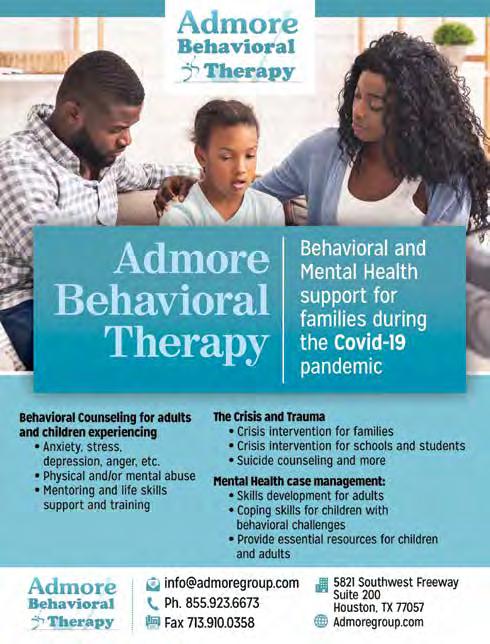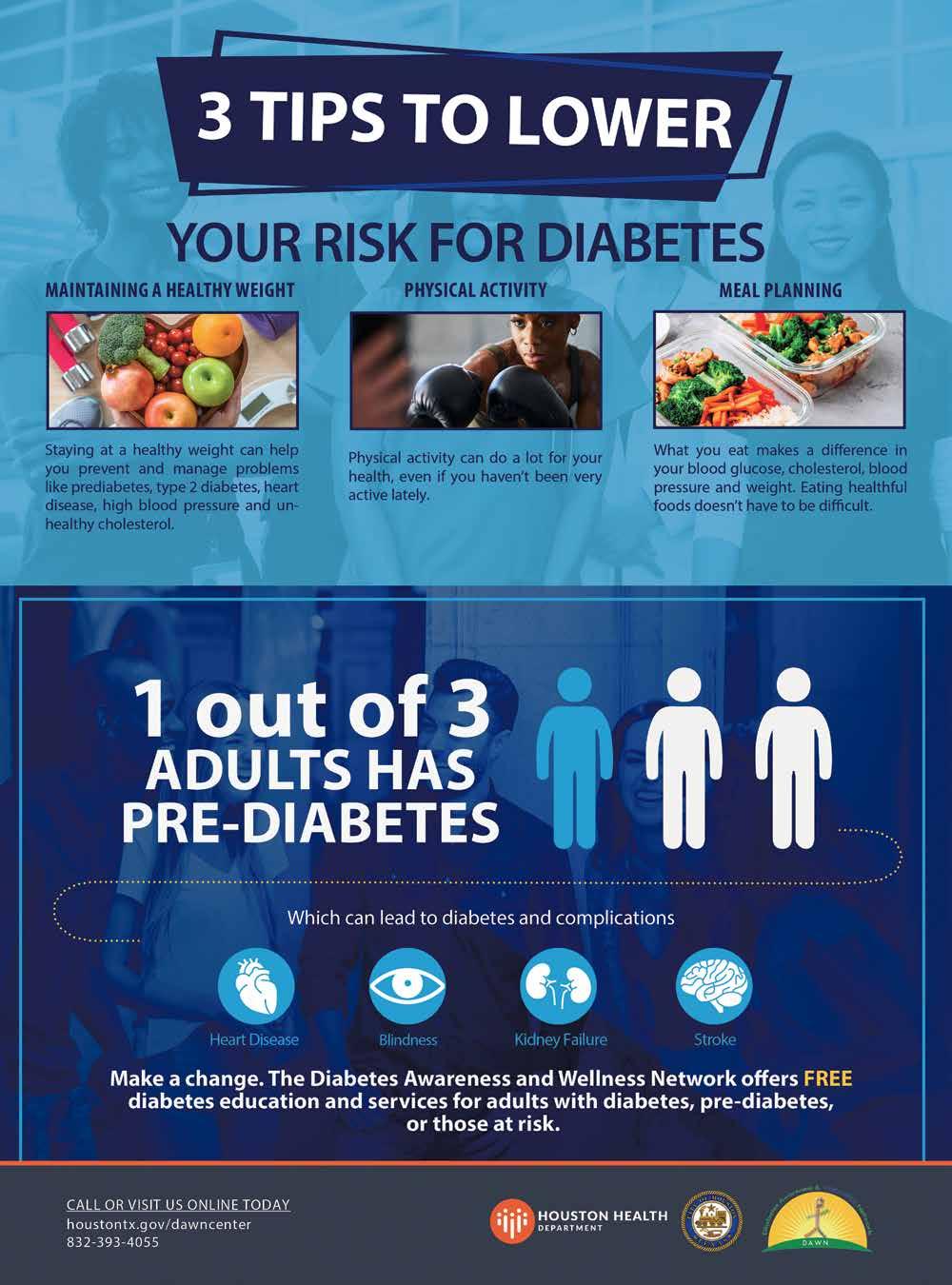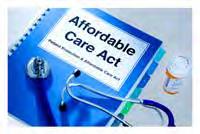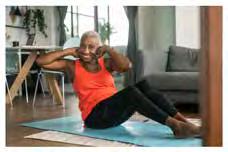








COVID-19 is complicating the 2021 spring allergy season. From watery eyes to dry coughs, people are left wondering exactly what their symptoms mean.
"Many people are asking about the differences between COVID-19 and seasonal allergies," says Dr. Luz Fonacier, president of the American College of Allergy, Asthma and Immunology (ACAAI). "While it isn't always cut and dried, there are some clear differences. Certain symptoms are only seen in one or the other."
If you are unsure what is ailing you, Fonacier suggests checking with a professional. "Allergists are the best trained medical professionals to diagnose and treat allergies and asthma," she said. "When in doubt, talk to an allergist."
To help shed some light on the differences between COVID-19 and spring allergies, here are seven common symptoms and their possible causes.
Coughing, chest tightness and shortness of breath are the calling cards of COVID-19. Unfortunately, these symptoms may also indicate an asthma-like allergic response. Many people who suffer from asthma also have allergies. If you are coughing this spring, consider the context. Is shortness of breath something you have experienced during previous springs? Do you have additional symptoms, like fever or itchy eyes? The answers to
these questions will help you distinguish the root cause.
Fever does NOT occur with spring allergies. Fever may indicate COVID-19, the flu or - more rarely - the common cold. The combination of fever, coughing, shortness of breath and loss of smell or taste is a strong indicator of COVID-19 and must be taken seriously.

Chills happen when the blood vessels in your skin constrict, causing you to feel cold without an obvious cause. Allergies do not cause chills, but COVID-19 does. If you are experiencing mild chills it is a good idea to self-isolate as a precaution. If you are experiencing chills in combination with shortness of breath, call your doctor to see if you should be tested for COVID-19
Sneezing and runny nose are rarely seen in COVID-19 cases. They are, however, very common for allergy sufferers. If the spring has left you sneezing and sniffling in the past, then seasonal allergies are still the most likely culprit in 2021. You can talk to a board-certified allergist about treatment options, which may include over-thecounter or prescription medication, or immunotherapy.
Itchy, watery eyes are the signature symptom of seasonal allergies. COVID-19 does not cause itchy eyes, but the practice of staying home may help by reducing your exposure to pollen. Avoidance, or the strategy of staying away from potential allergens, may help decrease symptoms. If avoidance is not cutting it, it may be time to speak with an allergist. The ACAAI makes connecting with an allergist simple on their Find an Allergist page.
Loss of smell or taste is another very
common symptom of COVID-19. While allergies may lead to mild loss of smell, it is best to be on the safe side while the coronavirus is still spreading. If you experience this symptom, call your doctor for advice.
Nausea or vomiting are not allergy symptoms. They may indicate the common cold, the flu or COVID-19
If this symptom is mild then self-isolating is a good course of action. If it becomes severe, and particularly if it is accompanied by fever and shortness of breath, you should call your doctor. They will be able to advise you on whether to get tested or seek medical help.

Understanding the differences between COVID-19 and seasonal allergies is key to keeping healthy this spring. Stay on top of the season by knowing your symptoms and knowing what is typical for you. If you have any questions or want to get started finding allergy relief, check out the resources ACAAI has to offer.
Source: BPT
As more Americans get vaccinated against COVID-19, you may find yourself out and about more. Whether you’re returning to the workplace or just getting a haircut, mask requirements may be in place in certain venues you frequent.

New Centers for Disease Control and Prevention (CDC) recommendations highlight the importance of snugly fitting masks. The good news is that innovations are helping people secure the fit of their masks, and, at the same time, solve some of the most common complaints they have when wearing them.
“As we began to wear masks in 2020, we found ourselves frustrated by things like fogging glasses and slipping masks. Our team has extensive experience solving health-related challenges and thought there had to be a way to address this,” says Dave Franchino, co-founder at MaskTite, a company that makes a medical-grade, double-sided tape de- signed to adhere to the inside of a mask for a more secure fit.
Franchino, with his background in medical product design, set to work with his team to design a way to give people of all face sizes and shapes a fast and easy way to make every mask fit better. Made of skin-safe, medical-grade, adhesive tape, MaskTite strips eliminate common mask problems like gaps, fogging glasses and slipping, and are sized for adults and children.
Here Franchino explains how to solve some of most common mask woes, some of which you’ve likely experienced:
• Loose fit and slipping masks: Readjusting your mask when it starts to slip is not always possible, whether it’s because you have your hands full of groceries or work tools or you simply want to avoid touching your face. Keeping the mask affixed to your face with tape can eliminate slipping when it matters most, and achieve a tighter fit, supporting the latest CDC recommendations.
• Foggy glasses: The warm air of your breath escaping from the top of your mask can quickly make glasses foggy, causing a new hazard -- an inability to see. While it can be tough to find a mask that fits securely enough to eliminate fog, applying a solution like MaskTite to the inside of your mask means you can get a proper fit and better visibility, no matter what mask you’re using.
• Irritating straps: A tight-fitting mask is great in many respects, but the straps can put a strain on the backs of one’s ears. Plus, there are times when mask straps can simply be in the way, such as when you’re getting a haircut. Securing your mask to your face with tape means you can go strap-free.
Waterproof and hypoallergenic, MaskTite strips can improve mask fit in a variety of environments, including healthcare, schools, retail and restaurant settings, salons, offices, manufacturing and more. Packaged in a resealable, plastic pouch that’s easy to throw into a pocket, purse, backpack or briefcase, they are currently available for sale through Amazon. MaskTite is made in the U.S. from U.S. materials. Learn more at MaskTite.com.

“From fogging glasses to slipping, nearly every issue that stems from wearing a mask is related to the mask’s fit. For those spending a lot of time in a mask, at school, work or elsewhere, a good mask-wearing experience can make all the difference,” says Franchino.
Source: StatePoint


 By d-mars.com News Provider
By d-mars.com News Provider
Meharry Medical College President and CEO Dr. James Hildreth has been named by President Joe Biden as a member of his COVID-19 Health Equity Task Force.
Dr. Hildreth, the renowned immunologist and academic administrator and Meharry’s 12th president, sat on the U.S. Food and Drug Administration board that approved the first U.S. coronavirus vaccines.
“I am honored to be chosen by President Biden as a member of the COVID-19 Health Equity Task Force. We are facing one of the largest challenges in the history of our nation,” Dr. Hildreth wrote in a statement.
“COVID-19 has killed hundreds of thousands of Americans, and if adequate steps are not taken, this number will continue to grow. As we have seen, COVID-19 does not discriminate, it does not respect borders, and it does not behave according to our timelines,” Dr. Hildreth added.
The United States has reported more than 27.2 million cases of the virus, and the death toll is nearing 470,000.
Immediately following his Jan. 21 swearing-in, President Biden issued a national strategy for the COVID-19 response and pandemic preparedness.
“For the past year, we could not turn to the federal government for a national plan to answer prayers with action – until today,” President Biden stated.
He then issued a 200-page report outlining a national strategy to beat the pandemic.
The President called it a comprehensive plan that starts with restoring public trust and mounting an aggressive, safe, and effective vaccination campaign.
“It continues with the steps we know that stop the spread like expanded masking, testing, and social distancing. It’s a plan where the federal government works with states, cities, Tribal communities, and private industry to increase supply and administer testing and the vaccines that will help reopen schools and businesses safely,” President Biden remarked.
Black Americans have lost three years in life expectancy over the last two years according to estimates by the Centers for Disease Control and Prevention. The decline is the largest since World War II. The life expectancy gap by race is now the widest since 1998 and at a 15-year low overall.
Non-Hispanic Black males now have the lowest life expectancy of any group. The new data shows that African Americans on average live six years less in life expectancy than Whites. The Covid-19 pandemic hit Black and Americans harder than any other group of Americans. Underlying health issues and lack of health care were a factor.

“Equity will also be central to our strategy so that the communities and people being disproportionately infected and killed by the pandemic receive the care they need and deserve.”
The President further noted that defeating the pandemic would take Congress providing the necessary funding, and families and neighbors continuing to look out for one another.
He said the country would need health care providers, businesses, civic, religious and civil rights organizations, and unions all rallying together in common purpose and with urgency, purpose, and resolve.
“We will need to reassert America’s leadership in the world in the fight against this and future public health threats,” President Biden asserted.
Dr. Hildreth noted that the virus has had the largest impact on communities of color, among Black and brown Americans with underlying health conditions.
“Without our immediate attention and a national, organized effort to fight this virus, we will be dealing with its impact for years to come,” Dr. Hildreth remarked.
“As the President of a historically Black medical school that was founded to eradicate health disparities between majority and minority communities, this work is a focus for me and my institution. I am committed to working with our national leadership to develop cohesive plans that will address these silent killers - illnesses like COVID-19 that impact our most vulnerable populations at alarming rates,” Dr. Hildreth stated further.
“We must address the pandemic together. I am confident that President Biden’s heightened focus on the pandemic will accelerate testing, treatment and vaccinations nationwide – proven strategies that will work to mitigate the virus and protect our people.
“I look forward to working with my esteemed colleagues on the Task Force to restore health, wellbeing and stability to all of America.”
Source: NNPA
Overall, African Americans are hospitalized at three times the rate of white Americans. African Americans die at double the rate from COVID than all other groups according to the Centers for Disease Control and Prevention.

The impact of COVID-19, which is the cause of 500,000 deaths in less than two years, is a leading cause, not just on deaths directly due to infection but also from heart disease, cancer and other conditions. The definition of “life expectancy” is calculated by how long someone born today is expected to live. The average life expectancy last year was 77.8.
Though Covid-19 was clearly the driver of the depressing new statistics on life expectancy, drug overdoses and other health factors also factored into the data.
President Biden and Democrats in Congress are currently structuring a multi-billion COVID relief package. Former President Trump largely ignored the coronavirus crisis as mortality numbers mounted. After Trump’s loss to Biden, departments of the federal government are focused on the COVID pandemic. Sources:
After four years of the previous administration’s efforts to destroy the Affordable Care Act (ACA), President Joe Biden has moved swiftly to repair damage done to President Obama’s signature legislation.
The Biden administration has reopened enrollment at Healthcare.gov through May 15 – though the timeline varies depending on the state – to ensure that everyone has an opportunity to obtain coverage.
The move is especially important as the nation continues to grapple with the coronavirus pandemic that has claimed more than 480,000 American lives.
Marcela Howell, president and CEO of In Our Own Voice: National Black Women’s Reproductive Justice Agenda, applaud ed the new enrollment window and encouraged all without health insur ance — especially in communities of color — to act now to enroll.
“We know that before the passage of the ACA, peo ple of color accounted for 54 percent of the uninsured in the United States, even though they only make up 35 percent of the population.
Black women and other women of color — who already
face systemic barriers to accessing health care — were disproportionately impacted,” Howell determined.
According to the Kaiser Family Foundation, about 9 million uninsured Americans are estimated to obtain free or subsidized health insurance during the special enrollment period.
Further, for those earning up to 400 percent of the federal poverty line – about $51,500 for one person and $106,000 for a family of four, government subsidies are available.
About 90 percent of those who sign up through Healthcare.gov receive subsidies, recent data revealed. Popularly known as Obamacare, former President

were opened. The number of Americans without health insurance fell significantly between 2010 and 2015, but began to rise after 2016 when Donald Trump took office and spent four years attempting to outlaw and dismantle the ACA.
Reportedly, during the first half of 2019, over 27 percent of the Hispanic population in the United States didn’t have health insurance, up from a historical low of 19.3 percent in 2016. In 2019, the national average was 9.5 percent and Asian Americans had the lowest rate at 7.4 percent. White Americans also had a below average rate at 9.8 percent, whereas 13.6 percent of Black Africans had no health insurance.
“During the last administration, due to actions to undermine enrollment, the number of people without health insurance increased for the first time since the ACA went into effect,” Howell noted further.

“Now we have a chance to provide health insurance for more people. We applaud the Biden-Harris administration for taking decisive action to make health insurance coverage more accessible by reopening enrollment for three months. Doing so surely will save lives and help protect people against financial insecurity.”
She continued:
“We strongly urge those who are uninsured — especially women and people of color — to act now to enroll. Visit www.healthcare.gov to enroll. Given that states with their own insurance exchanges may have different enrollment periods, it is important for people without insurance to act immediately so they don’t miss the opportunity to get coverage.”
Source: NNPA
As the COVID-19 pandemic continues, many older adults are following the advice of public health experts and remaining at home to limit risk of exposure. Bad weather conditions can also keep people inside for days at a time. But a strong body and mind are as important as ever, and the good news is being indoors doesn’t mean having to give up on exercising.
There are many great health benefits to staying active, such as improving mobility and balance, developing muscle and bone strength, increasing energy and managing weight. Exercise can also reduce blood pressure and lower the risk of heart disease, stroke and diabetes.
According to Dr. Gina Conflitti, chief medical officer for Medicare at Cigna, the advantages aren’t just physical: “Keeping active has a positive impact on mental health, too,” she said. “With regular exercise, many
older adults enjoy better sleep, clearer thinking, lower stress and improved mood.”
According to Cigna, which serves many older adults through its Medicare Advantage plans, here are four simple tips for exercising in the comfort of home:

1. Make a plan. What is your long-term goal? Having something to work toward is great motivation to keep up daily activity and set yourself up for success. Before you begin any physical activity, talk to your doctor about your health goals. Your doctor can provide guidance on exercises that are safe and attainable as you begin a new chapter of your wellness journey.
2. Take it slow. You don’t have to run a marathon or even lift weights to keep fit – the most important thing is to just move. Start by walking around your house a few times a day or doing some gentle stretching. Just adding five minutes of activity to your day can make a difference in your overall health and mood. As your body gets used to daily movement, you can enhance your physical activities as recommended by your health care provider.
3. Use what you have. You don’t need a gym to get a healthy workout. In fact, there are plenty of exercises you can do using items found around the house. For example, “chair dips” are an effective arm and shoulder workout –just place both feet on the ground, face away from a chair and support your body by putting your hands on the seat behind you with straight arms. Next, raise and lower yourself by bending and unbending your arms.
You can even exercise while seated. Hold your leg out in front of you and
trace each letter of the alphabet. Work your feet and leg muscles by laying a kitchen towel on the floor, then use your toes to grab, release and push the fabric.
4. Check your health care plan benefits. If you have a Medicare Advantage plan, you might be eligible for extra benefits such as at-home fitness programs, including free on-demand workouts accessible from your computer, smart device or phone, as well as gear, such as resistance bands.
Find more healthy aging and exercise tips at cigna.com/medicare/ healthy-aging/physical-activity.
“As you start, remember to be flexible and stay positive,” Dr. Conflitti suggests. “Changing habits can take time, but every step is progress. If you haven’t reached a goal, don’t be hard on yourself – it’s most important to continue at your own pace.”
Source: StatePoint